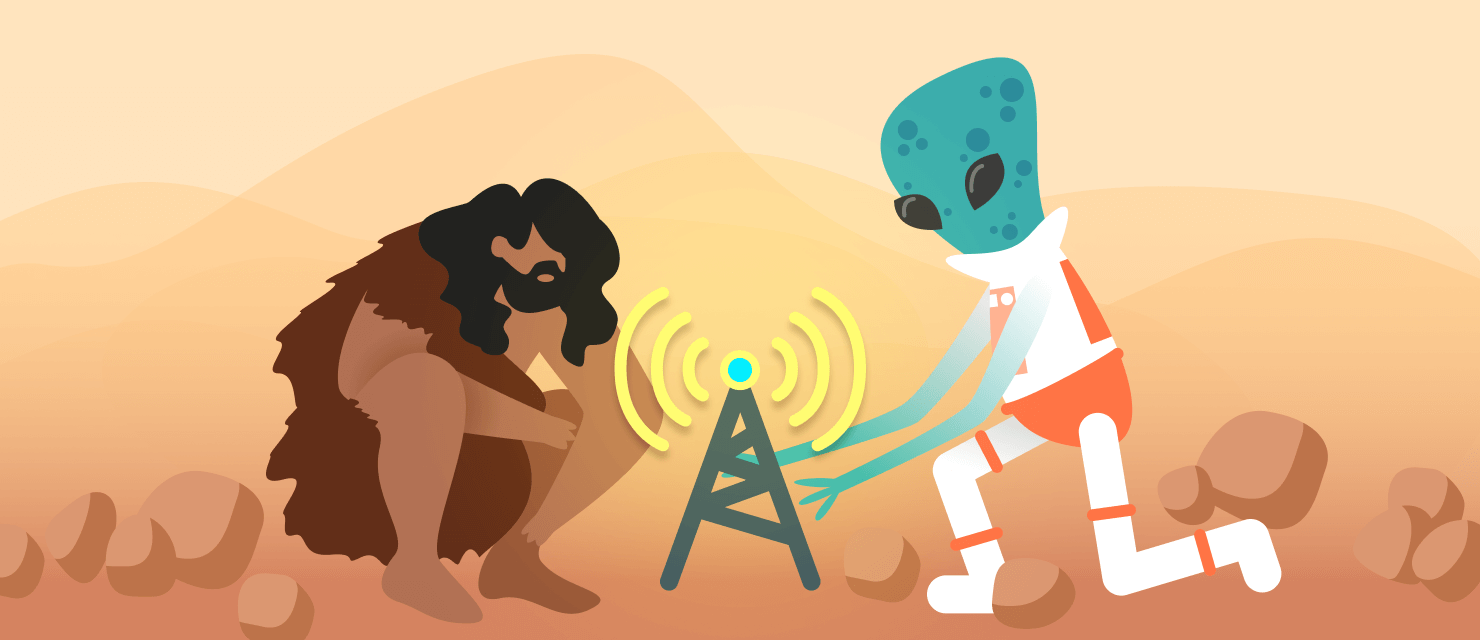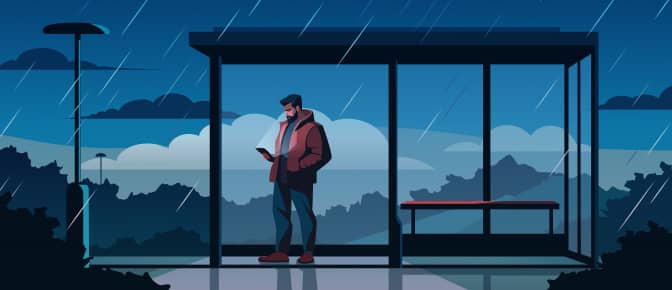Weather forecasting plays a critical role in our daily lives and impacts spheres such as agriculture, transportation, construction, energy production, and emergency management. Accurate prediction of weather provides valuable information that helps us make informed decisions and plan our activities around upcoming weather patterns. In this article, we’ll focus on forecasting history from ancient times to modern days and see how it has evolved.
Early Weather Forecasting
The weather forecasting history dates back thousands of years, to ancient civilizations such as the Babylonians and Egyptians. They developed early weather prediction methods based on careful observation of natural phenomena.
The Babylonians, who lived in Mesopotamia from the 18th to the 6th century BCE, could track the movements of celestial bodies. They believed that the positions of stars and planets could help predict weather patterns. The Babylonians also developed a system of dividing the sky into twelve equal parts, which they called the zodiac. Besides, they studied cloud formations, wind patterns, and the behavior of animals.
The ancient Egyptians from 4000 BCE to 400 CE, residing in the Nile Valley, also had a strong connection to nature. They developed a sophisticated system of irrigation to manage the floodwaters of the Nile and were keenly aware of the impact of climate on their crops. The Egyptians also observed the fauna, including bird migrations and snake behavior, which they thought could anticipate the start of the rainy season.
Though primitive by modern standards, these methods mark early attempts to understand and predict the intricate mechanics of nature.
Invention and Development of Weather Instruments
The earliest meteorological instruments were simple devices to measure temperature, humidity, and atmospheric pressure. For example, in the early 17th century, Galileo Galilei invented the first gas thermometer. Some sources call it a thermoscope.
The device was very simple. It consisted of a glass tube with a glass ball soldered to its end. Having slightly heated the ball, Galileo put the free end of the tube into a vessel with water. When the air in the ball cooled, the air pressure in it lowered, and the water, under the influence of atmospheric pressure, rose up the tube. Depending on how high the water rose, it was possible to determine the temperature.
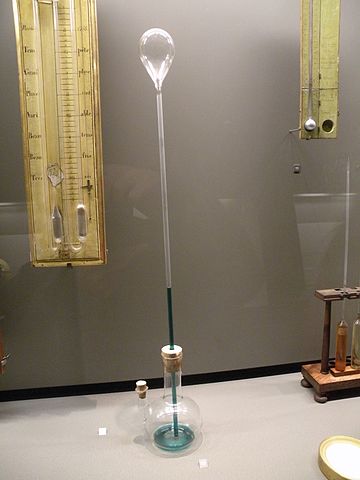 Image source: Chatsam, CC BY-SA 3.0, via Wikimedia Commons
Image source: Chatsam, CC BY-SA 3.0, via Wikimedia Commons
Similarly, in the mid-17th century, Evangelista Torricelli invented the first mercury barometer to measure atmospheric pressure. This device relied on the balance between the weight of a column of mercury and the atmospheric pressure. A glass tube was filled with mercury, inverted, and submerged in a vessel of mercury. As a result, the mercury in the tube descended until there was a 760 mm difference between the mercury levels in the tube and on the surface.
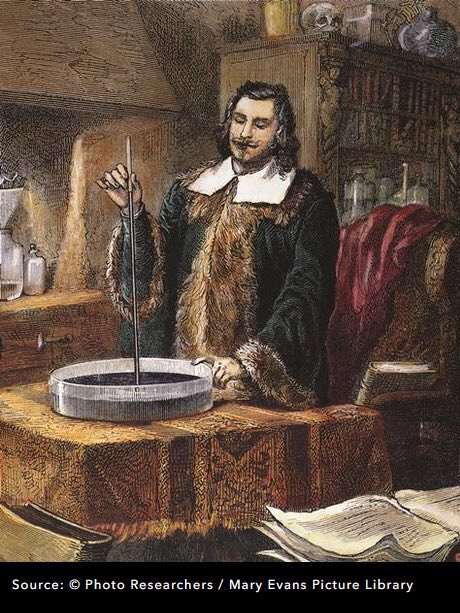
Over time, these basic instruments were refined and improved, and new instruments appeared - for example, the hygrometer. Leonardo Da Vinci invented its prototype in 1450, which was then improved by Horace-Benedict de Saussure in the late 18th century. The hygrometer calculated humidity by measuring the weight of a sample of air before and after it was passed through a drying agent.
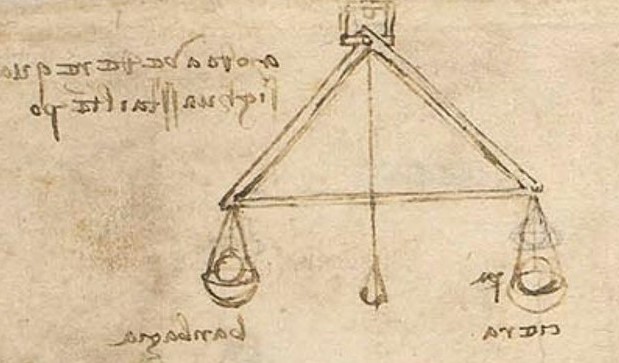 Image source: The Visual Agency, Public domain, via Wikimedia Commons
Image source: The Visual Agency, Public domain, via Wikimedia Commons
Other important meteorological instruments that were developed over time include:
- the anemometer (to measure wind speed and direction),
- the rain gauge (to measure precipitation),
- the weather balloon (to measure temperature, humidity, and atmospheric pressure at different altitudes).
In the modern era, technological advances have led to the development of highly sophisticated meteorological instruments. Examples are Doppler radar (for storm tracking and wind patterns), satellites (to monitor weather and climate patterns over large areas), and computer models.
The table below summarizes a timeline of the invention and development of meteorological instruments:
| Year | Country | Invention |
|---|---|---|
| 1441 | Korea | Rain gauge |
| 1450 | England | Mechanical anemometer |
| 1450 | Italy | Hygrometer prototype |
| 1593 | Italy | First thermometers and temperature scales |
| 1643 | Italy | First barometer |
| 1714 | Netherlands | Improved thermometer |
| 1783 | Geneva | Improved hygrometer |
| 1844 | France | Aneroid barometer |
| 1846 | England | Cup anemometer |
| 1896 | France | Weather balloons |
| 1926 | Canada | Three-cup anemometer |
How the Telegraph Impacted Weather Forecasting
Invented in 1837 by Samuel Morse and Alfred Vail, the telegraph revolutionized long-range communication. It used electrical impulses to send messages over long distances with the help of wires.
The invention of the telegraph had a significant impact on forecasting. Before the telegraph, it took meteorologists days or weeks to collect and transmit weather information. The invention of the telegraph sped up this process, allowing for more accurate and timely weather prediction.
1844 saw the first use of the telegraph to send meteorological data. The Smithsonian Institution established a network of telegraph stations across the United States to collect data and transmit it to a central location.
In the late 19th century, the first weather maps were created with the help of the telegraph. These maps showed the location and movement of weather systems across a wide area. As a result, meteorologists could track storms and predict their paths. The telegraph also allowed forecasters to issue warnings about severe weather, such as hurricanes and tornadoes.
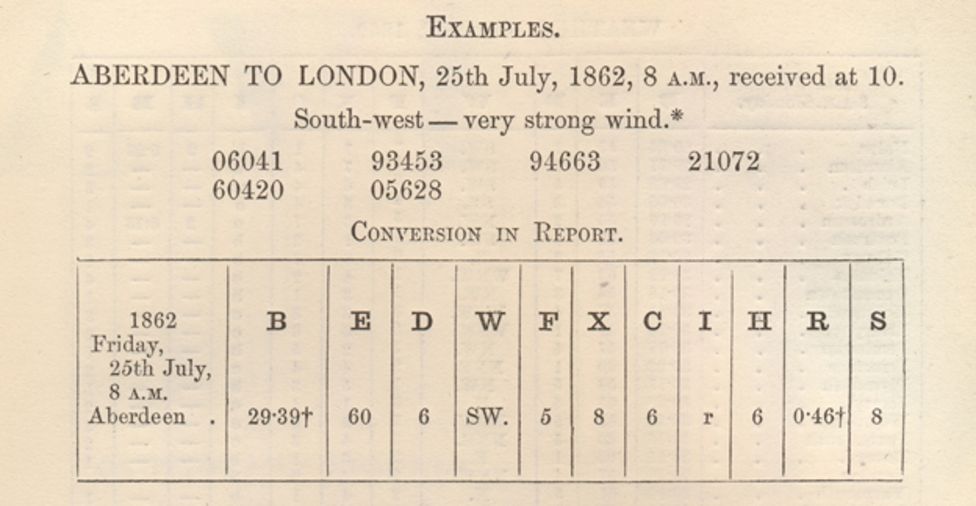 Image source: BBC News
Image source: BBC News
Development of Modern Weather Forecasting
In 1854, the British government established the Meteorological Office (Met Office), whose task was to collect meteorological data from across the country and use it in forecasts. The office used a network of weather stations, telegraph lines, and a system of coded messages to gather and spread information about the weather. On July 31, 1861, the Met Office issued the first public forecast, and that’s how modern weather forecasting began.
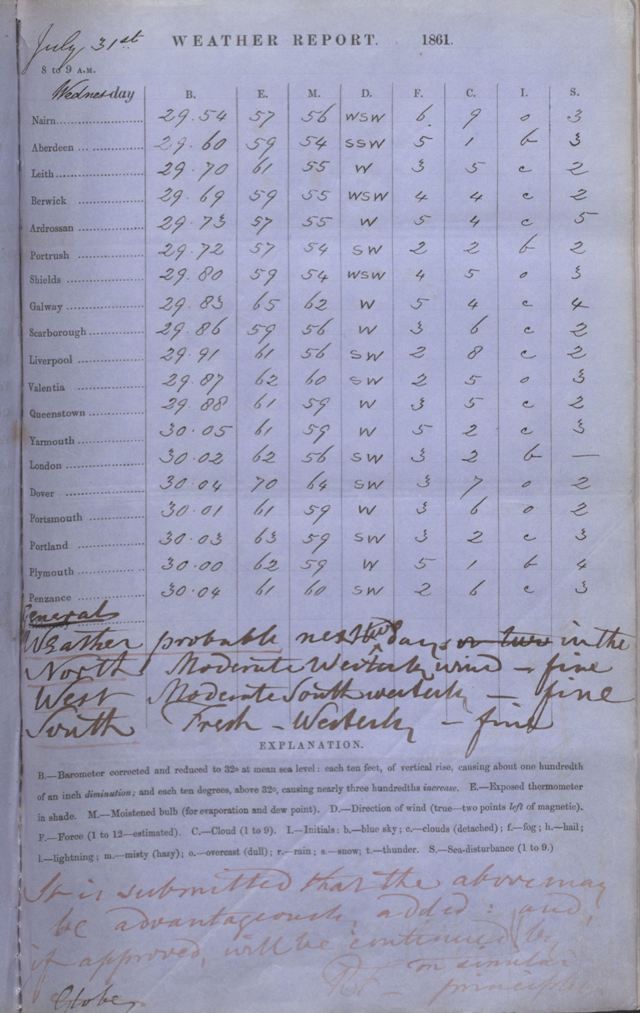 Image source: Met Office
Image source: Met Office
The first target audience of these weather forecasts and storm warnings were sailors and fishermen. Later, owners and attendees of horse racing events, country fairs, and flower shows also started relying on forecasts by the Met Office. However, the forecasts were not always accurate. Admiral Robert Fitzroy, the founder of the Met Office and inventor of the weather forecast, received lots of criticism. Because of the criticism despite his hard work, Admiral Fitzroy got depression and committed suicide in 1865.
Over the next few decades, weather technology advancements led to further improvements in weather forecasting accuracy. In the early 20th century, meteorologists started using radiosonde balloons to measure temperature and humidity at different altitudes. And in the 1950s, they began using satellites and radar technology for monitoring weather phenomena.
The first satellite designed specifically for weather observations was TIROS 1. NASA launched it in April 1960. Two television cameras and two radiometers allowed TIROS 1 to transmit cloud images and temperature measurements of the Earth’s surface. It could also spot hurricanes, typhoons, and other meteorological patterns not visible from the ground.
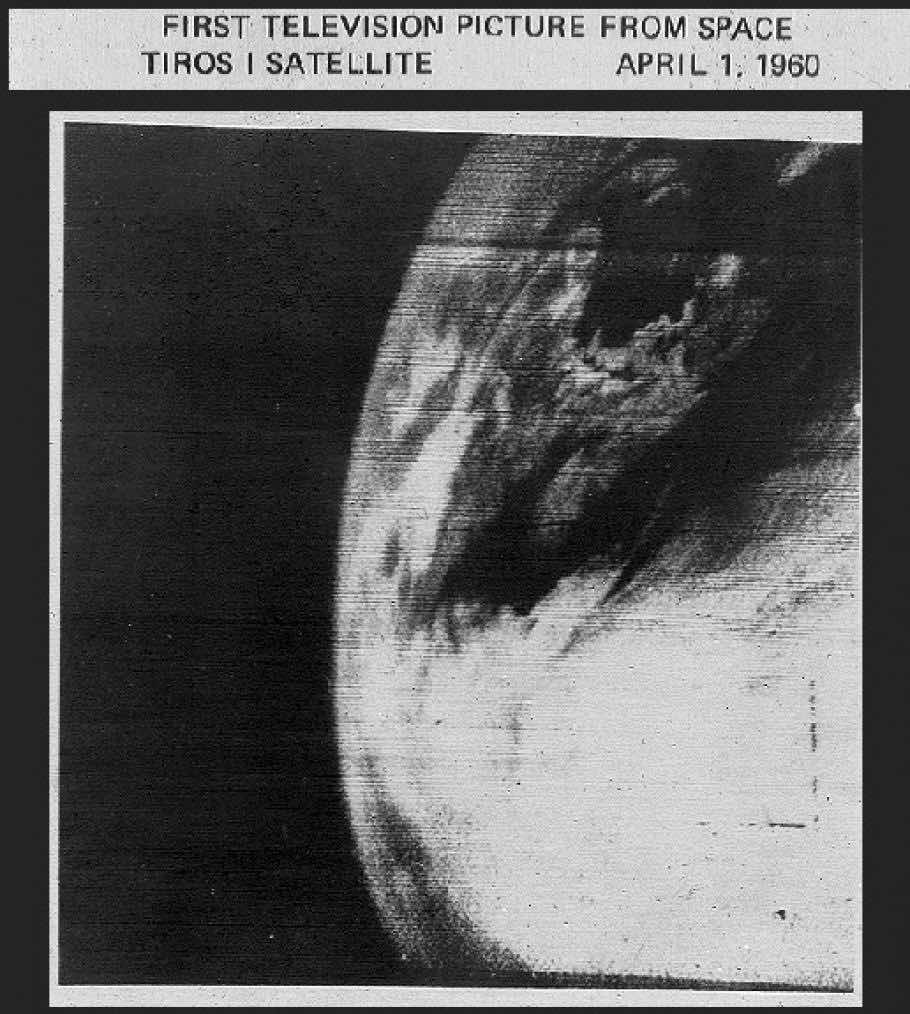 Image source: National Air and Space Museum
Image source: National Air and Space Museum
Radar technology was also crucial for monitoring weather patterns. In the 1940s, radars were first used to detect precipitation and measure the intensity of rain and snowfall. Specifically, it all started in 1942, when the Weather Bureau received 25 surplus radars from the US Navy.
By the 1960s, radar technology had advanced to the point where it could detect the movement of clouds, thus assisting in storm tracking.
Computer Modeling in Meteorology
In the 1950s and 60s, the introduction of computer modeling in meteorology revolutionized forecasting once again. With the help of computers, meteorologists could process vast amounts of data and run complex numerical and statistical models to simulate the behavior of the atmosphere.
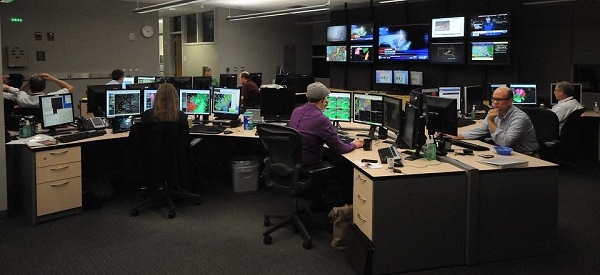 Image source: National Weather Service
Image source: National Weather Service
Supercomputers and AI improve weather forecasting by analyzing large amounts of meteorological data and generating predictions from complex models. Here is how they contribute.
Weather Data Analysis
Supercomputers process massive amounts of meteorological data collected from various sources, such as satellites, radar, and weather stations. They use algorithms to analyze this data and create weather models that help forecasters understand how the atmosphere will behave over time.
Machine Learning
AI algorithms can learn from past meteorological patterns and predict how they will repeat in the future. This is particularly helpful for predicting severe weather like hurricanes and tornadoes, where minor changes can have major impacts.
Ensemble Modeling
Supercomputers can run multiple simulations with different initial conditions to generate an ensemble of possible outcomes. This provides a range of potential outcomes and helps forecasters identify the most likely scenario.
Real-Time Forecasting
With real-time data processing by supercomputers, forecasters can promptly update their predictions with new information. In rapidly changing conditions during severe weather events, such a quick response can save lots of lives.
Conclusion
Today, weather forecasting is a highly sophisticated field, with a wide range of tools and techniques at its disposal. Satellites, radar, and other advanced technologies allow meteorologists to observe the atmosphere in real time and ensure weather prediction accuracy. At the same time, apps like RainViewer make digital weather forecasting simpler and more convenient by delivering up-to-date forecasts right to your smartphone’s home screen.
Despite these advances, however, weather forecasting remains an inherently uncertain science. Meteorologists are constantly working to improve their understanding of the atmosphere and develop new techniques for predicting the weather.
